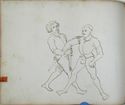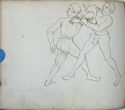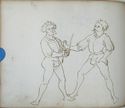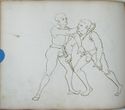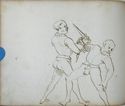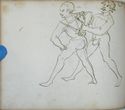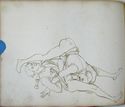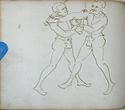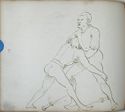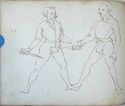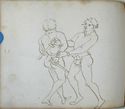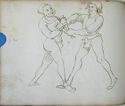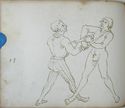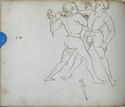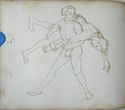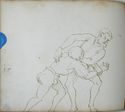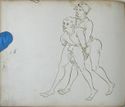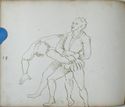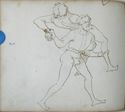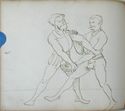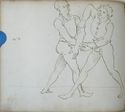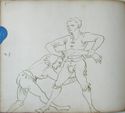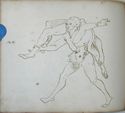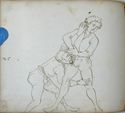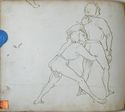|
|
You are not currently logged in. Are you accessing the unsecure (http) portal? Click here to switch to the secure portal. |
Difference between revisions of "Gregor Erhart"
| (11 intermediate revisions by the same user not shown) | |||
| Line 28: | Line 28: | ||
| influenced = [[Paulus Hector Mair]] | | influenced = [[Paulus Hector Mair]] | ||
| − | | genre = {{plainlist | [[Fencing manual]] | [[Wrestling manual]] }} | + | | genre = {{plainlist |
| + | | [[Fencing manual]] | ||
| + | | [[Wrestling manual]] | ||
| + | }} | ||
| notableworks = | | notableworks = | ||
| − | | archetype = {{plainlist | [[Gregor Erhart Fechtbuch (MS E.1939.65.354)|MS E.1939.65.354]] (1533) | [[Jörg Breu | + | | archetype = {{plainlist |
| − | | manuscript(s) = {{plainlist | [[Opus Amplissimum de Arte Athletica (MS Dresd.C.93/C.94)|MS | + | | [[Gregor Erhart Fechtbuch (MS E.1939.65.354)|MS E.1939.65.354]] (1533) |
| + | | [[Jörg Breu Draftbook (Cod.I.6.2º.4)|Cod. I.6.2º.4]] (1545?) | ||
| + | }} | ||
| + | | manuscript(s) = {{plainlist | ||
| + | | [[Opus Amplissimum de Arte Athletica (MS Dresd.C.93/C.94)|MS Dresd. C.94]] (1542) | ||
| + | | [[Opus Amplissimum de Arte Athletica (Cod.10825/10826)|Cod. 10826]] (1550s) | ||
| + | | [[Opus Amplissimum de Arte Athletica (Cod.icon. 393)|Cod.icon. 393 I]] (1550s) | ||
| + | }} | ||
| principal manuscript(s)= | | principal manuscript(s)= | ||
| first printed edition= | | first printed edition= | ||
| Line 43: | Line 53: | ||
== HEMA Contributions == | == HEMA Contributions == | ||
| − | Though there are no records of Erhart participating in the fencing guilds, in 1533 he sketched the [[Gregor Erhart Fechtbuch (MS E.1939.65.354)|MS E.1939.65.354]]. This illustrated fencing manual covers [[Jörg Wilhalm | + | Though there are no records of Erhart participating in the fencing guilds, in 1533 he sketched the [[Gregor Erhart Fechtbuch (MS E.1939.65.354)|MS E.1939.65.354]]. This illustrated fencing manual covers [[Jörg Wilhalm]]'s [[sword]] and a series of uncaptioned [[dagger]] and [[grappling]] pieces; he also included copies of a number of unillustrated treatises by masters who stood in the tradition of [[Johannes Liechtenauer]]. It later passed to [[Lienhart Sollinger]], and subsequently [[Paulus Hector Mair]]; both men used it as a source for their respective fencing compendia. |
| − | + | {{-}} | |
| − | {{ | + | {{image|MS E.1939.65.354 085v.jpg|Folio 85v}} |
| − | + | {{image|MS E.1939.65.354 086v.jpg|Folio 86v}} | |
| − | + | {{image|MS E.1939.65.354 087v.jpg|Folio 87v}} | |
| − | }} | + | {{image|MS E.1939.65.354 088v.jpg|Folio 88v}} |
| − | + | {{image|MS E.1939.65.354 089v.jpg|Folio 89v}} | |
| − | + | {{image|MS E.1939.65.354 090v.jpg|Folio 90v}} | |
| − | + | {{image|MS E.1939.65.354 091v.jpg|Folio 91v}} | |
| − | + | {{image|MS E.1939.65.354 092v.jpg|Folio 92v}} | |
| − | + | {{image|MS E.1939.65.354 093v.jpg|Folio 93v}} | |
| − | + | {{image|MS E.1939.65.354 094v.jpg|Folio 94v}} | |
| − | | | + | {{image|MS E.1939.65.354 095v.jpg|Folio 95v}} |
| − | + | {{image|MS E.1939.65.354 096v.jpg|Folio 96v}} | |
| − | + | {{image|MS E.1939.65.354 097v.jpg|Folio 97v}} | |
| − | + | {{image|MS E.1939.65.354 098v.jpg|Folio 98v}} | |
| − | + | {{image|MS E.1939.65.354 099v.jpg|Folio 99v}} | |
| − | + | {{image|MS E.1939.65.354 100v.jpg|Folio 100v}} | |
| − | | | + | {{image|MS E.1939.65.354 101v.jpg|Folio 101v}} |
| − | + | {{image|MS E.1939.65.354 102v.jpg|Folio 102v}} | |
| − | + | {{image|MS E.1939.65.354 103v.jpg|Folio 103v}} | |
| − | + | {{image|MS E.1939.65.354 104v.jpg|Folio 104v}} | |
| − | | | + | {{image|MS E.1939.65.354 105v.jpg|Folio 105v}} |
| − | + | {{image|MS E.1939.65.354 106v.jpg|Folio 106v}} | |
| − | + | {{image|MS E.1939.65.354 107v.jpg|Folio 107v}} | |
| − | + | {{image|MS E.1939.65.354 108v.jpg|Folio 108v}} | |
| − | + | {{image|MS E.1939.65.354 109v.jpg|Folio 109v}} | |
| − | | | + | {{image|MS E.1939.65.354 110v.jpg|Folio 110v}} |
| − | |||
| − | |||
| − | |||
| − | |||
| − | |||
| − | | | ||
| − | |||
| − | |||
| − | |||
| − | |||
| − | | | ||
| − | |||
| − | |||
| − | |||
| − | |||
| − | | | ||
| − | |||
| − | |||
| − | |||
| − | |||
| − | | | ||
| − | |||
| − | |||
| − | |||
| − | |||
| − | | | ||
| − | |||
| − | |||
| − | |||
| − | |||
| − | | | ||
| − | |||
| − | |||
| − | |||
| − | |||
| − | | | ||
| − | |||
| − | |||
| − | |||
| − | |||
| − | | | ||
| − | |||
| − | |||
| − | |||
| − | |||
| − | | | ||
| − | |||
| − | |||
| − | |||
| − | |||
| − | | | ||
| − | |||
| − | |||
| − | |||
| − | |||
| − | |||
| − | |||
| − | {{ | ||
| − | |||
| − | |||
| − | }} | ||
| − | {| | ||
| − | |||
| − | |||
| − | |||
| − | |||
| − | |||
| − | |||
| − | | | ||
| − | |||
| − | | | ||
| − | |||
| − | |||
| − | |||
| − | |||
| − | |||
| − | | | ||
| − | |||
| − | |||
| − | |||
| − | |||
| − | |||
| − | | | ||
| − | |||
| − | |||
| − | |||
| − | |||
| − | |||
| − | | | ||
| − | |||
| − | |||
| − | |||
| − | |||
| − | |||
| − | | | ||
| − | |||
| − | |||
| − | |||
| − | |||
| − | |||
| − | |||
| − | |||
| − | | | ||
| − | |||
| − | |||
| − | |||
| − | |||
| − | |||
| − | | | ||
| − | |||
| − | |||
| − | |||
| − | | | ||
| − | |||
| − | |||
| − | |||
| − | |||
| − | |||
== Additional Resources == | == Additional Resources == | ||
| − | + | {{bibliography}} | |
== References == | == References == | ||
Latest revision as of 23:13, 2 November 2023
| Gregor Erhart | |
|---|---|
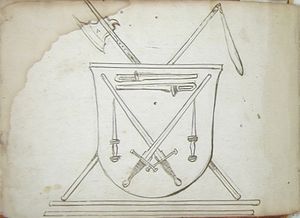 Coat of Arms from Erhart's manual | |
| Born | ca. 1468 (?) Ulm, Germany |
| Died | 1540 Augsburg, Germany |
| Spouse(s) | Anna Daucher |
| Occupation | Sculptor |
| Influenced | Paulus Hector Mair |
| Genres | |
| Language | Early New High German |
| Archetype(s) |
|
| Manuscript(s) |
|
| Concordance by | Michael Chidester |
Gregor Erhart (ca.1468? – 1540) was a 16th century German sculptor. He was born at Ulm, the son of sculptor Michel Erhart. No record of his life exists before 1494, when he was already working in Aurgburg, Germany.[1] He married Anna Daucher sometime before he was made a master in 1496, and he continued to live in Augsburg until his death in 1540.[1] Because Erhart never left a signature, his work can only be identified by stylistic analysis or researching the original commission. His greatest artistic achievement was probably the Madonna of Mercy that he sculpted for Holy Roman Emperor Maximilian I in 1515; in fact, there are no records of Erhart receiving any commissions after 1525.[1]
HEMA Contributions
Though there are no records of Erhart participating in the fencing guilds, in 1533 he sketched the MS E.1939.65.354. This illustrated fencing manual covers Jörg Wilhalm's sword and a series of uncaptioned dagger and grappling pieces; he also included copies of a number of unillustrated treatises by masters who stood in the tradition of Johannes Liechtenauer. It later passed to Lienhart Sollinger, and subsequently Paulus Hector Mair; both men used it as a source for their respective fencing compendia.
Additional Resources
The following is a list of publications containing scans, transcriptions, and translations relevant to this article, as well as published peer-reviewed research.
- Welle, Rainer (1993). '…und wisse das alle höbischeit kompt von deme ringen'. Der Ringkampf als adelige Kunst im 15. und 16. Jahrhundert. Pfaffenweiler: Centaurus-Verlagsgesellschaft. ISBN 3-89085-755-8.

